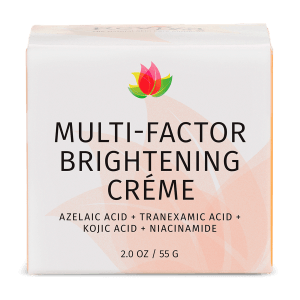Sodium benzoate is a salt of benzoic acid that is found naturally in cranberries, prunes, plums, apples, and other fruits. As a preservative, sodium benzoate is primarily an anti-fungal agent but also has some effectiveness against bacteria. The U.S. Food and Drug Administration (FDA) has designated it a “generally recognized as safe” ingredient.
Related Reading:
https://online.personalcarecouncil.org/jsp/CIRList.jsp?id=2130
Benzyl alcohol, benzoic acid, sodium benzoate, and potassium benzoate. According to the OECD SIDS initial assessment report on benzoates, benzoic acid and benzyl alcohol were slightly irritating to the skin, whereas sodium benzoate was nonirritating.3
The following cosmetic ingredients are reviewed in this safety assessment: benzyl alcohol, benzoic acid, sodium benzoate, calcium benzoate, magnesium benzoate, potassium benzoate, and benzyl benzoate. Most of these ingredients function as fragrance ingredients/preservatives in cosmetic products. Together, data reported to the FDA VCRP in 2010 and the results of a 2010 industry survey performed by the council indicated use of the following ingredients in cosmetics: benzyl alcohol, benzoic acid, sodium benzoate, calcium benzoate, potassium benzoate, and benzyl benzoate. According to this industry survey, ingredient use concentrations have ranged from 0.000001% (sodium benzoate) to 5% in leave-on products (benzoic acid) and 10% in rinse-off products (benzyl alcohol).
Sodium benzoate is the sodium salt of benzoic acid, widely used as a food preservative (with an E number of E211) and a pickling agent. It appears as a white crystalline chemical with the formula C6H5COONa.
 | |

| |
 Ball-and-stick model of part of the crystal structure
| |
 Ball-and-stick model of packing in the crystal structure
| |
| Names | |
|---|---|
| Preferred IUPAC name
Sodium benzoate | |
| Other names
E211, benzoate of soda
| |
| Identifiers | |
3D model (JSmol)
|
|
| ChEBI | |
| ChEMBL | |
| ChemSpider | |
| ECHA InfoCard | 100.007.760 |
| E number | E211 (preservatives) |
PubChem CID
|
|
| RTECS number |
|
| UNII | |
CompTox Dashboard (EPA)
|
|
| |
| |
| Properties | |
| C7H5NaO2 | |
| Molar mass | 144.105 g·mol−1 |
| Appearance | white or colorless crystalline powder |
| Odor | odorless |
| Density | 1.497 g/cm3 |
| Melting point | 410 °C (770 °F; 683 K) |
| 62.65 g/100 mL (0 °C) 62.84 g/100 mL (15 °C) 62.87 g/100 mL (30 °C) 74.2 g/100 mL (100 °C) | |
| Solubility | soluble in liquid ammonia, pyridine |
| Solubility in methanol | 8.22 g/100 g (15 °C) 7.55 g/100 g (66.2 °C) |
| Solubility in ethanol | 2.3 g/100 g (25 °C) 8.3 g/100 g (78 °C) |
| Solubility in 1,4-Dioxane | 0.818 mg/kg (25 °C) |
| Pharmacology | |
| A16AX11 (WHO) | |
| Hazards | |
| GHS labelling: | |
 | |
| Warning | |
| H319 | |
| P305+P351+P338 | |
| NFPA 704 (fire diamond) | |
| Flash point | 100 °C (212 °F; 373 K) |
| 500 °C (932 °F; 773 K) | |
| Lethal dose or concentration (LD, LC): | |
LD50 (median dose)
|
4100 mg/kg (oral, rat) |
Except where otherwise noted, data are given for materials in their standard state (at 25 °C [77 °F], 100 kPa).
| |










